Marketing a childcare centre is a cornerstone of building trust, increasing visibility, and driving enrolments in today’s competitive environment. Parents are naturally discerning, seeking facilities that prioritise safety, foster development, and provide a nurturing space for their children. This comprehensive guide will walk you through strategies for how to market your childcare centre. From digital campaigns to local SEO and community partnerships, these insights will help you create meaningful connections with parents and ensure your centre thrives.
Understanding the Target Audience
The foundation of successful marketing lies in understanding your audience. In this case, parents of young children are your primary target. Their concerns, preferences, and behaviours shape how they perceive and choose childcare centres.

Demographics and Psychographics
Parents with children aged 0–5 are at the heart of your audience. While demographics give you a broad understanding of their age, income levels, and locations, psychographics delve deeper into their emotions and motivations. Many parents prioritise safety, affordability, and convenience. They look for facilities near their homes or workplaces and value programs that align with their educational aspirations for their children, such as bilingual learning or creative activities.
For insights into early childhood education, check resources like the Australian Early Development Census (AEDC) for statistics on local demographics and child development needs.
Pain Points of Parents
Understanding parental concerns is crucial. Many parents grapple with the fear of entrusting their children to strangers. Others struggle to find facilities that balance affordability with quality. Long waiting lists, lack of transparent communication, and uncertainty about staff qualifications further compound their anxieties. Addressing these pain points in your marketing efforts can set your childcare centre apart.
Decision-Making Factors for Parents
When choosing a childcare centre, parents weigh several factors:
- Reputation: Online reviews and word-of-mouth recommendations play a significant role.
- Staff Qualifications: The credentials and experience of educators matter deeply.
- Safety and Hygiene: Clean, secure facilities with a favourable child-to-staff ratio inspire trust.
Referencing reliable accreditation standards like the Australian Children’s Education & Care Quality Authority (ACECQA) can build credibility and address safety concerns.
Building a Unique Brand Identity
Your brand is your childcare centre’s personality. It’s the first thing parents notice and the lasting impression they carry. Creating a unique brand identity ensures you stand out in a crowded market.
Crafting a Memorable Logo and Tagline
Your logo and tagline should encapsulate your centre’s mission. Use warm, inviting colours and friendly fonts to convey trust and approachability. A tagline like “Growing Minds, One Step at a Time” communicates your commitment to child development while resonating emotionally with parents.
Establishing Core Values
Your core values act as a compass for your centre. Values such as inclusivity, innovation, and safety should inform every aspect of your operations. These values aren’t just internal—they should shine through your marketing, staff interactions, and even the layout of your facilities.
For inspiration, explore ECE theories and practices to align your values with proven developmental frameworks.
Defining Your Value Proposition
What makes your childcare centre special? Is it your eco-friendly policies, personalised learning plans, or cutting-edge facilities? Your value proposition is the unique promise you offer parents, and it should feature prominently in all your marketing materials.
Developing a Professional Website
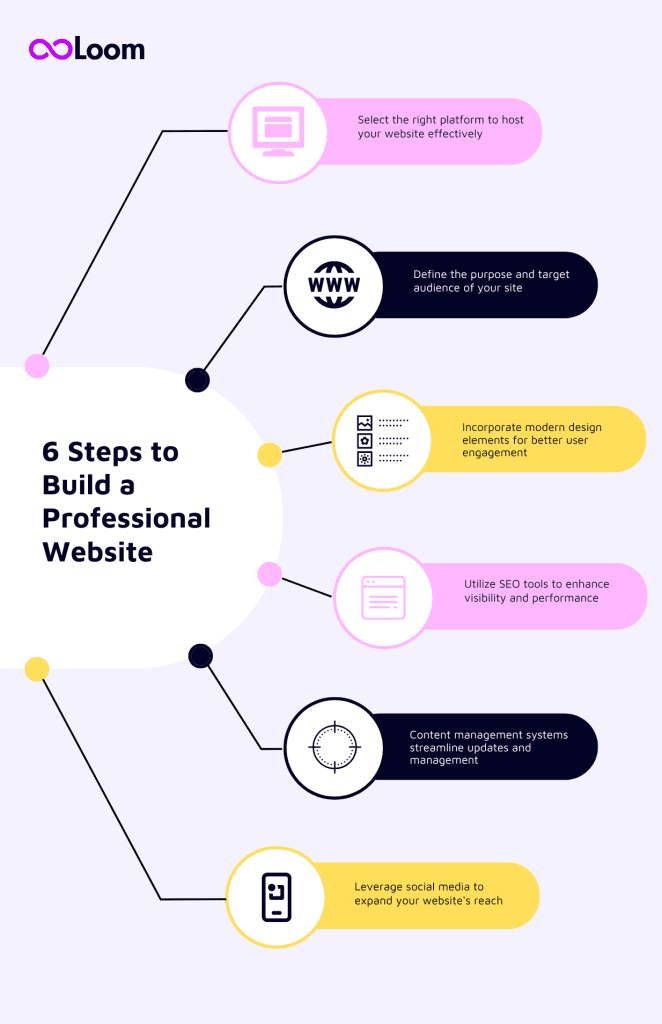
A professional website is your virtual storefront. It’s often the first point of contact for prospective parents, so it must be inviting, functional, and informative.
Must-Have Features for Childcare Websites
Your website should include clear contact details, an intuitive navigation structure, and engaging visuals of your facilities and programs. Highlight key information such as staff qualifications, curriculum details, and enrolment processes. An FAQ section addressing common concerns can also build trust. Find out more from our comprehensive guide on why web design is important.
For guidance on creating a user-friendly website, check out Small Business Website Best Practices.
User Experience and Mobile Optimisation
Given that many parents browse on mobile devices, ensure your website is mobile-friendly. Pages should load quickly, forms should be easy to fill out, and navigation should be seamless. These details not only improve user experience but also boost your search engine rankings.
Showcasing Parent Testimonials and Accreditation
Testimonials act as social proof, reassuring prospective parents of your credibility. Incorporate stories from satisfied families, and prominently display any awards or accreditations your centre has earned.
Highlight your compliance with frameworks like the National Quality Standard (NQS) to further reinforce trust.
Optimising for Local SEO
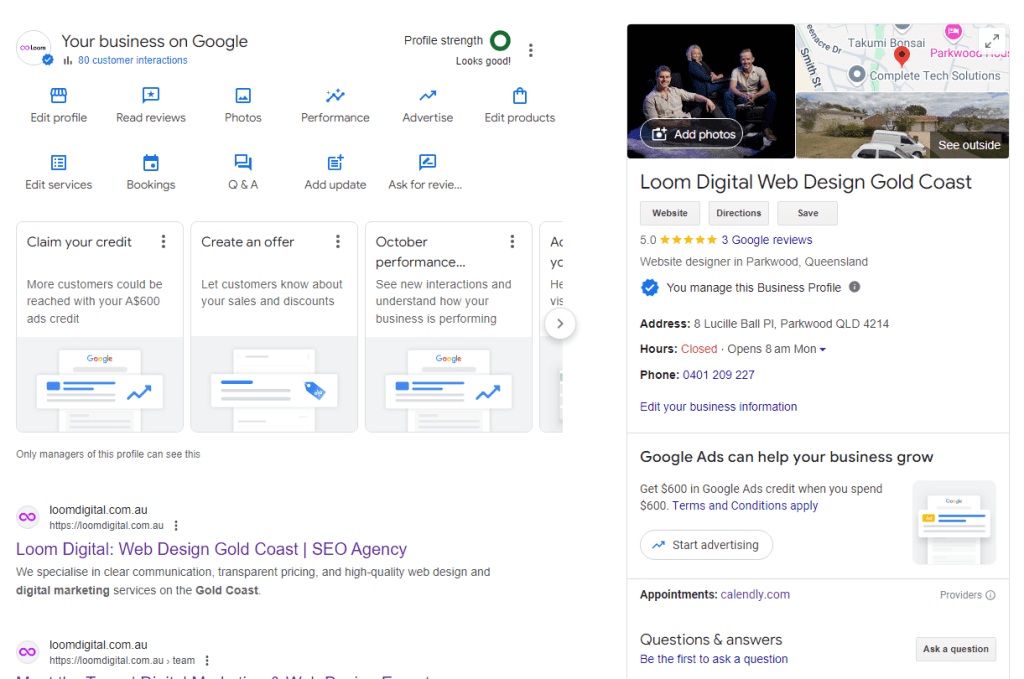
Local SEO ensures that your childcare centre appears in search results when parents in your area look for childcare services. This strategy increases your visibility and attracts the right audience.
Importance of Local SEO for Childcare Centres
Parents searching for “childcare near me” or “daycare in [city]” rely heavily on local search results. A strong local SEO strategy positions your centre as a trusted option in your community. We also offer a comprehensive guide that covers How to Get Your Website to Come Up on Google.
Creating and Optimising a Google Business Profile
A Google Business Profile is a powerful tool. Include accurate contact details, a description of your services, and photos of your facilities. Regularly update your profile and encourage parents to leave reviews.
Explore Google’s Guide to Business Profiles for tips on optimising your listing.
Leveraging Local Keywords
Incorporate relevant local keywords into your website content, blog posts, and metadata. Phrases like “high-quality childcare in [suburb]” or “best daycare in [city]” resonate with search engines and parents alike.
Leveraging Social Media Marketing

Social media is a vital channel for reaching parents, showcasing your centre, and engaging with the community. Platforms like Facebook, Instagram, and Pinterest offer unique ways to share your story.
Choosing the Right Platforms
Each platform serves a distinct purpose. Facebook is ideal for sharing updates, events, and reviews. Instagram excels in visual storytelling through photos and videos of your centre. Pinterest can be used to share parenting tips and educational activities, aligning your brand with value-driven content.
Content Ideas to Engage Parents
Post photos of children participating in activities (with parental permission), updates on new programs, and parenting tips. Engaging content fosters trust and positions your centre as a helpful resource for parents.
Running Paid Ad Campaigns on Social Media
Social media ads allow you to target parents in your geographic area. Showcase your centre’s unique features, such as flexible hours or enrichment programs, in visually compelling advertisements.
Creating Valuable Content
Content marketing builds authority and keeps your audience engaged. By offering value, you can attract and retain the interest of parents.
Blog Posts Focused on Parenting Tips
Write blogs that address common parenting concerns, such as “How to Prepare Your Child for Their First Day at Daycare” or “The Benefits of Play-Based Learning.” Optimise these posts with relevant keywords for better search visibility.
Video Content Featuring Your Facilities
Video tours of your centre provide a glimpse into daily life, making parents feel more comfortable. Interviews with staff or footage of special events can further personalise your content.
Downloadable Resources for Parents
Create resources like meal planners, activity guides, or developmental milestone checklists. These tools not only add value but also encourage parents to share their contact details in exchange for downloads.
Implementing Email Marketing Campaigns
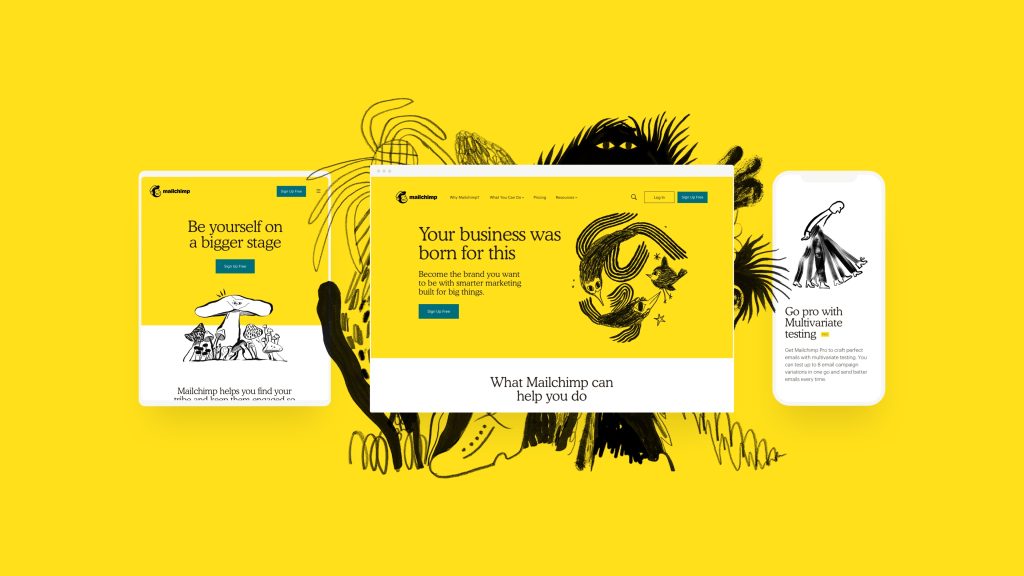
Email marketing is a cost-effective way to nurture leads and maintain relationships with existing families. Mailchimp is a great resource that offers a forever free plan to get you started.
Building a Subscriber List
Encourage website visitors to sign up for your newsletter by offering valuable content, such as event updates or parenting resources. Ensure your signup process is simple and visible.
Newsletter Content That Adds Value
Send regular newsletters featuring updates about your centre, upcoming events, and parenting tips. Personalise your emails to make parents feel valued.
Automated Follow-Up Emails for Inquiries
Set up automated email sequences to respond to inquiries promptly. Include information about your centre, testimonials, and an invitation to schedule a tour.
Partnering with Local Businesses
Collaborating with local businesses can significantly enhance your childcare centre’s visibility and credibility. These partnerships not only help you reach a wider audience but also establish your centre as a vital part of the community.
Forming Alliances with Pediatricians and Schools
Reach out to local pediatricians and schools to build mutually beneficial partnerships. Pediatricians can refer parents to your centre as a trusted childcare option, while schools might recommend your services for siblings of older students. In turn, you can display their flyers or recommend their services to families at your centre, creating a win-win situation.
Collaborating with Family-Oriented Events
Sponsoring or participating in family-friendly events, such as community fairs, parenting workshops, or holiday celebrations, increases your centre’s visibility. Setting up a booth with engaging activities for children—like face painting or crafts—can draw in families and give you an opportunity to share information about your services.
Utilising Cross-Promotions with Complementary Services
Partner with businesses that cater to families, such as kids’ clothing stores, toy shops, or even fitness centres offering parent-child classes. Cross-promotions, such as shared discounts or co-hosted events, can benefit both parties and provide added value to your community.
Hosting Open Houses and Events
Open houses and events give parents a chance to experience your centre firsthand. They provide a platform to build trust, answer questions, and showcase your facilities.
Planning an Effective Open House
An open house should feel welcoming and well-organised. Greet parents warmly, provide guided tours of your facilities, and arrange engaging activities for children. Offer light refreshments and provide brochures or flyers that detail your programs and values.
Promoting Your Events for Maximum Attendance
Use a combination of marketing channels—email campaigns, social media posts, and local community boards—to advertise your event. Highlight the benefits of attending, such as meeting staff, exploring the centre, or learning more about enrolment opportunities.
Using Events to Convert Leads into Enrolments
Have a clear follow-up plan after the event. Send thank-you emails to attendees and invite them to schedule one-on-one consultations. Highlight any enrolment discounts or early-bird offers available for those who attended.
Encouraging Online Reviews
Online reviews are one of the most influential factors in a parent’s decision-making process. They provide authentic insights into the experiences of other families and can significantly boost your centre’s credibility.
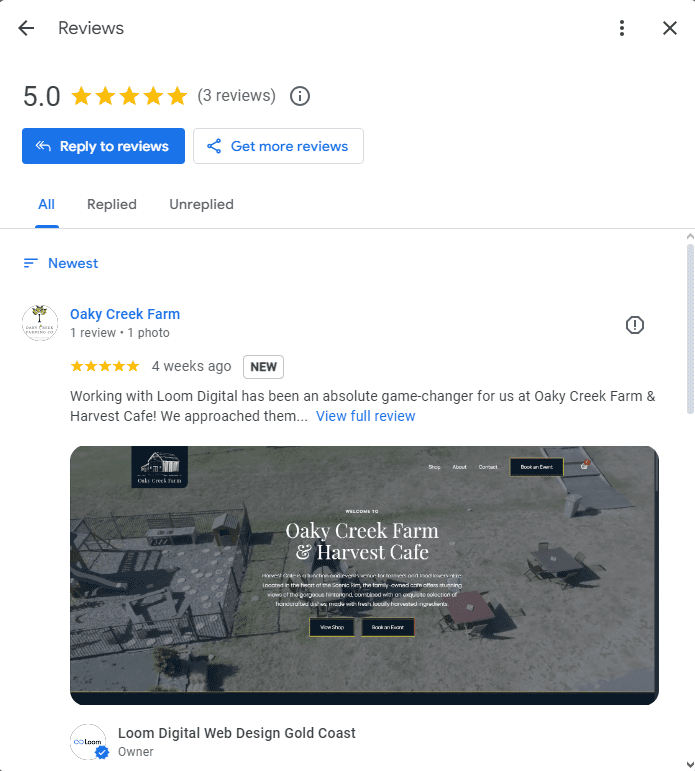
Importance of Reviews in Parent Decision-Making
Positive reviews reassure parents about the quality and reliability of your services. They also improve your online visibility, as platforms like Google favour businesses with strong review profiles.
How to Request Reviews from Satisfied Parents
After positive interactions, such as a successful event or a parent expressing satisfaction, kindly ask for a review. Provide clear instructions on how to leave one, and make the process as simple as possible by sharing direct links to your Google or Facebook review pages.
Managing Negative Reviews with Professionalism
Negative reviews, though unfortunate, provide an opportunity to showcase professionalism. Respond promptly and politely, addressing the concern and offering a solution. This demonstrates your commitment to resolving issues and building trust.
Investing in Paid Advertising
Paid advertising can amplify your reach and attract new families by targeting parents actively searching for childcare services.

Google Ads for Childcare Centres
Google Ads allows you to target specific keywords like “childcare in [city]” or “preschool near me.” These ads appear prominently in search results, driving traffic to your website and increasing enquiries.
Targeting Parents Through Facebook Ads
Facebook ads let you target parents within a specific geographic area. Use compelling visuals and clear calls to action, such as “Schedule a Tour Today,” to encourage clicks. Include testimonials or highlights of unique programs to make your ads stand out.
Budgeting for ROI-Driven Campaigns
Set a realistic budget for your paid advertising campaigns, and track key metrics like cost per click (CPC) and conversion rates. Continuously refine your targeting and messaging to maximise return on investment (ROI).
Monitoring and Measuring Marketing Efforts
Tracking your marketing performance is essential to understanding what works and refining your strategies over time.
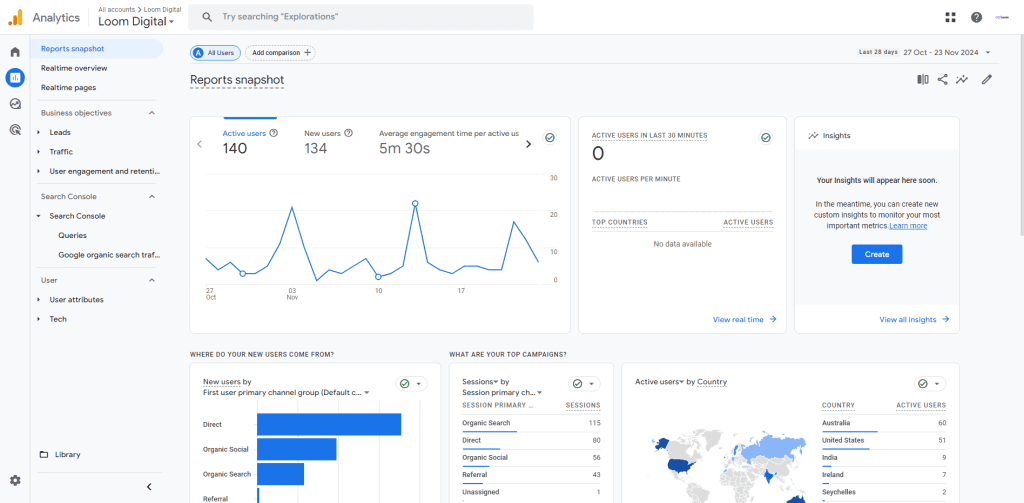
Tools to Track Key Performance Metrics
Use tools like Google Analytics to monitor website traffic, identify the sources of your leads, and measure engagement. Platforms like Facebook Insights and email marketing software also provide valuable data on campaign performance.
Analysing Website Traffic and Conversion Rates
Pay close attention to metrics like page views, bounce rates, and the number of enquiries generated through your website. Identify which pages perform best and optimise underperforming ones to improve conversion rates.
Adjusting Strategies Based on Data Insights
Regularly review your data to identify trends and patterns. If a particular campaign or content type performs well, allocate more resources to similar efforts. Conversely, refine or discontinue strategies that aren’t delivering results.
Using Video Marketing Effectively

Video content is one of the most engaging ways to connect with parents. It allows you to showcase your centre’s personality and give prospective families an authentic glimpse of what to expect. Tools like FlexClip can help you create professional-looking videos without the need for expensive equipment or advanced editing skills.
Benefits of Virtual Tours
A virtual tour allows parents to explore your facilities from the comfort of their homes. Highlight key areas like classrooms, play areas, and safety features. This is particularly valuable for parents who are unable to visit in person.
Storytelling Through Video Content
Use video to tell your centre’s story. Share footage of children participating in fun activities, interviews with educators, or behind-the-scenes looks at daily operations. These personal touches foster trust and emotional connections.
Sharing Success Stories of Enrolled Children
With parental permission, share stories of how your centre has positively impacted children’s development. These success stories demonstrate the tangible benefits of your programs and help parents envision similar outcomes for their own children.
Word-of-Mouth Referrals and Parent Advocacy
Happy parents are your best advocates. By encouraging word-of-mouth referrals, you can grow your centre’s enrolment organically.
Creating a Referral Incentive Program
Offer incentives such as discounts or gift cards for families who refer new enrolments. Make it easy for parents to refer others by providing simple instructions and promotional materials.
Engaging Existing Parents as Advocates
Build strong relationships with your current families by providing exceptional service and clear communication. Happy parents are more likely to recommend your centre to friends and family.
Leveraging Social Proof for Credibility
Encourage parents to share their positive experiences on social media. Showcase these testimonials on your own platforms to reinforce your centre’s reputation.
Staying Ahead of Industry Trends
The childcare industry is constantly evolving. Staying informed about trends and adapting your strategies ensures your centre remains competitive and relevant.
Adopting New Technologies in Childcare Marketing
Explore tools like CRM systems, marketing automation software, or apps that streamline communication with parents. These technologies can improve efficiency and enhance the parent experience.
Keeping Up with Parent Expectations
Modern parents expect transparency, convenience, and personalisation. Stay in tune with their needs by conducting surveys, seeking feedback, and regularly updating your offerings.
Building Long-Term Brand Loyalty
Focus on creating a nurturing and reliable environment that families trust. Strong relationships with parents build loyalty and lead to lasting success.
By implementing these comprehensive marketing strategies, your childcare centre will stand out in a competitive market. From understanding your audience to leveraging cutting-edge tools and building community connections, these efforts will help you attract and retain families while fostering trust and growth.
